Khajuraho, in Madhya Pradesh, is a UNESCO World Heritage Site. Khajuraho is well-known worldwide for its breathtaking temples that are filled with passion and romantic carvings. Khajuraho, a small town in the Bundelkhand region, is a remarkable example of ancient Indian architecture and culture. These Hindu and Jain temples’ architecture captures the purity of love, while the wall carvings show affection in the most sensual and beautiful manner. The greatest thing about Khajuraho is that, despite numerous criminal attempts to destroy the entire complex, which at one point had a remarkable 85 temples and caverns, they were never able to achieve it. Temples of Khajuraho hold some weight in the UPSC – Art and Culture exam section, along with some other competitive exams.
Contents
Famous Temples of Khajuraho
Khajuraho, in Madhya Pradesh, is a UNESCO World Heritage Site. It is well-known for famous romantic sculptures worldwide. Khajuraho, a small town in the Bundelkhand region, is a remarkable example of ancient Indian architecture and culture. These Hindu and Jain temples’ architecture captures the purity of love, while the wall carvings show affection in the most sensual and beautiful manner. The greatest thing about Khajuraho is that, despite numerous criminal attempts to destroy the ulentire complex, which at one point had a remarkable 85 temples and caverns, they were never able to achieve it. Temples of Khajuraho hold some weight in the UPSC- Art and Culture exam section, along with some other competitive exams.
Vamana Temple

The northernmost Vamana Temple dates back to the late 11th century and is devoted to Vishnu’s dwarf form; nevertheless, the idol within the sacred space bears a striking resemblance to a tall, sly youngster. Most of the major gods and goddesses are depicted on the sanctum walls, showing an unusual level of religious openness. Vishnu appears in several of his forms, including the Buddha, his ninth incarnation. A pair of sculptures situated outdoors primarily focus on the beauties of paradise, striking lovable positions below their personal domes.
Also read: Largest Temple in the World: The Angkor Wat Temple
Brahma Temple

Though it dates back to approximately 900 AD, the Brahma Temple is made of granite and sandstone. This temple is dedicated to Brahma, who is considered the most important god in Hinduism after Shiva and Vishnu. It features a representation of Shiva called a linga. Its design is different from that of the majority of the other temples, especially in the way that its shikhara is shaped and the materials that are used.
Ghantai Temple
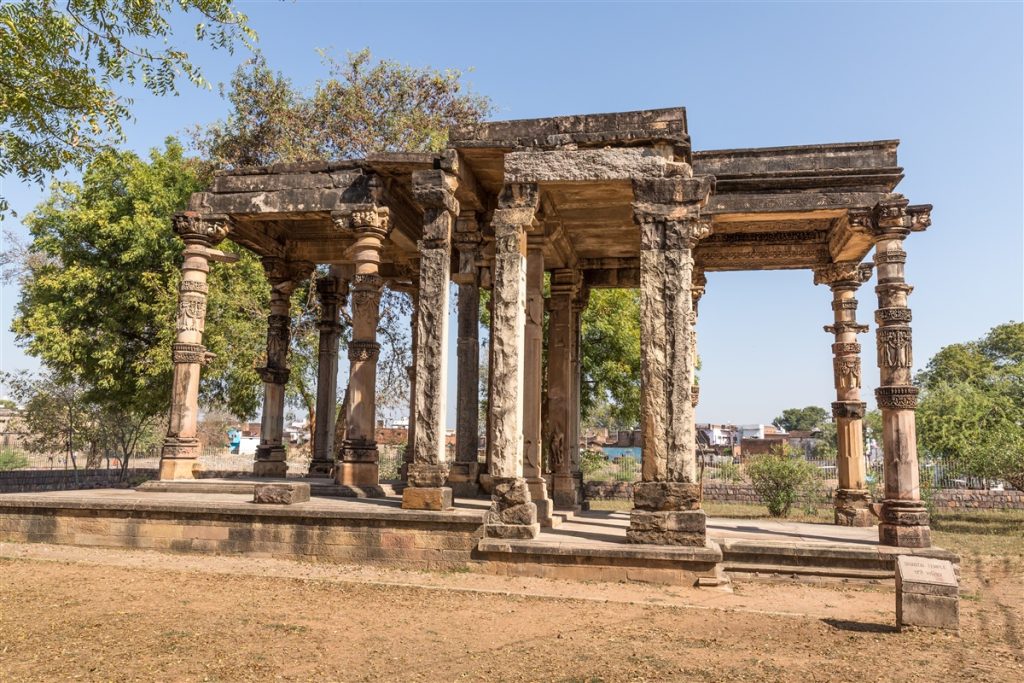
The Ghantai Temple is a small jewel located south of the three temples, towards the Jain complex. The pillars of this temple, carved with carvings of bells and pearls, are all that exist. The eight-armed Jain goddess riding the mythical bird Garuda and a sculpture showing the sixteen dreams of Mahavira’s mother, the highest religious figure in Jainism and counterpart to the Buddha, adorn the entrance.
Adinath Temple
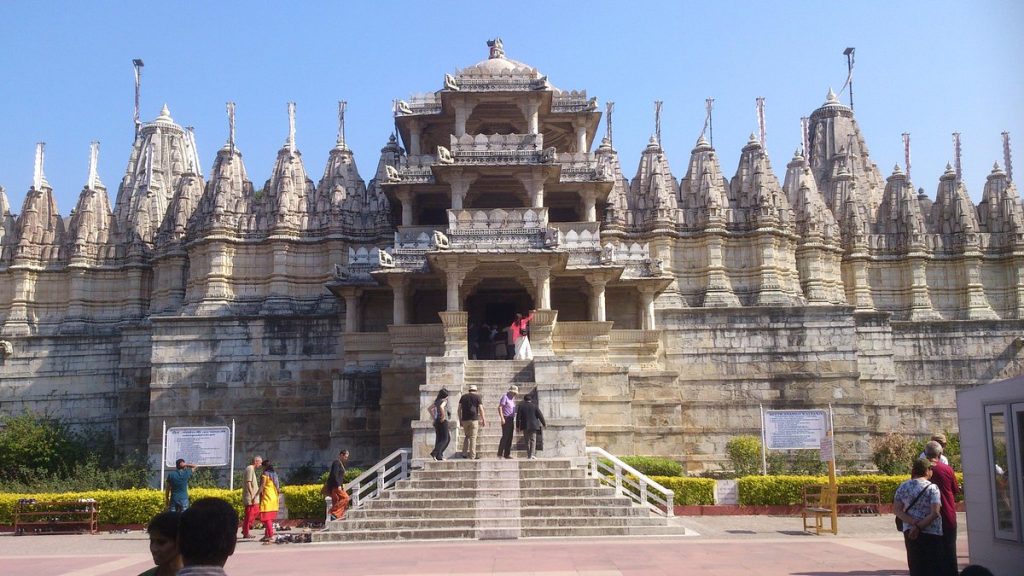
Located southeast of Ghantai in a small enclosed compound is the modest Adinath Temple, which dates back to the late 11th century. The statue of Tirthankara Adinatha, which means “Ford-Maker” in Sanskrit, and its porch are later additions. Although this temple is tiny in size, its base and shikhara include complex carvings that date back to the early years of the Chandelas’ downfall.
Parsvanath Temple
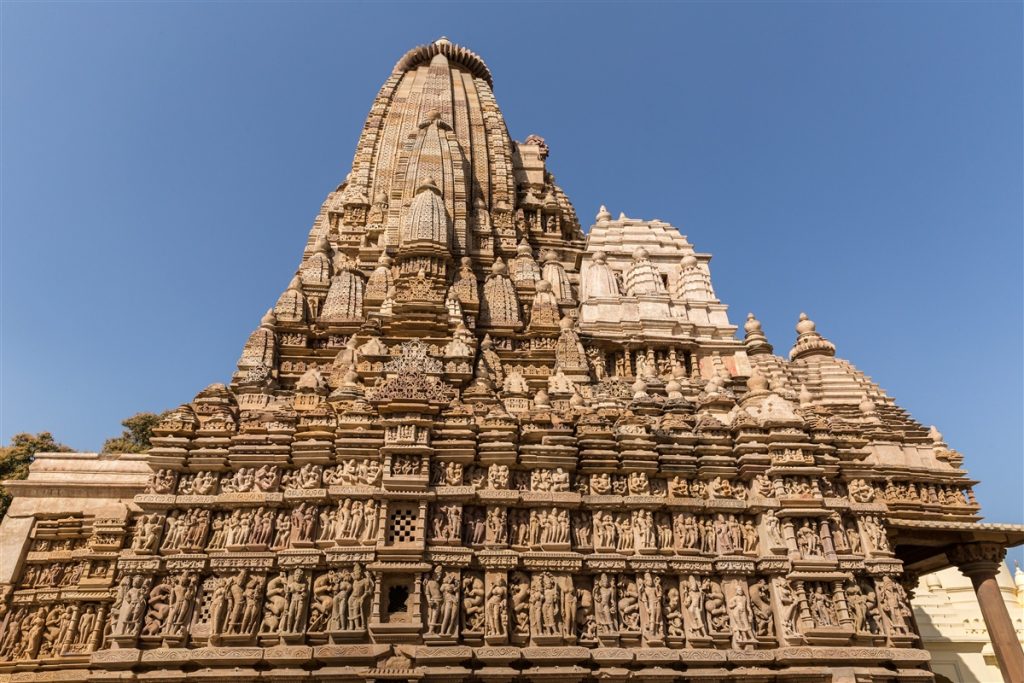
Built in the middle of the 10th century, the Parsvanath Temple to the south is the biggest and best of the Jain complex belonging to the Eastern Group. It houses some of the best sculptures in Khajuraho, including images of Vishnu. This temple’s design is a straightforward rectangle with a unique spire at the back. The outer walls are decorated with statues of flying angels and sloe-eyed beauties occupied with children, make-up, and flowers. Even the texture of the women’s fragile clothes is depicted in the stone.
Duladeo Temple

The Duladeo Temple, located roughly 900 yards south of the Ghantai in the Eastern Group, appears larger and smoother than the majority of Khajuraho temples. With its 12th-century construction, the Duladeo Temple is likely the last structure constructed in Khajuraho. While there are some colorful sculptures, the majority are exaggerated and tacky. Though the romantic figures are subtly positioned, passion still flows into this Shiva-dedicated shrine.
Varaha Temple
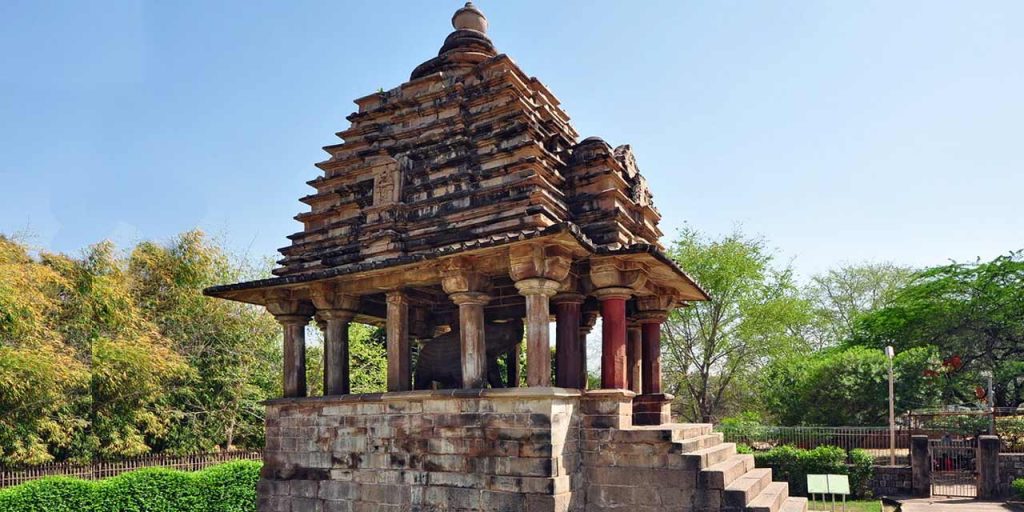
The Varaha Temple (c. 900–925) is visible as you enter the Western Group complex on your left. The site honors Vishnu’s Boar Birth, also known as his Varaha avatar, which he took on to save the earth from a demon who kept it in the mud near the bottom of the sea. Within the inner sanctuary, a stone boar stands on the snake Shesha, and on its huge and highly polished sides are portrayed every aspect of creation. There is a lotus marble carving on the ceiling.
Also Read: Nagara Style of Temples
Devi Jagdamba Temple

A large idol above the sanctum’s doorway indicates that the Devi Jagdamba Temple was formerly devoted to Vishnu. Although it is currently devoted to Parvati, Shiva’s wife, it is also known as the Kali Temple because of the figure of the goddess of wrath, Kali. The temple appears to be fashioned like a cross when viewed from the inside, thanks to its three-shrine layout. There are several sensual pairs in the sculpture’s third ring. One of Khajuraho’s greatest popular images is the three-headed, eight-armed deity of Shiva.
Mahadeva Temple

Together with the Devi Jagdamba and the Kandariya, the modest and mostly destroyed Mahadeva Temple is located on this site. It may have started out as a branch of the Kandariya. Mahadev temple, which was likely devoted to Shiva’s lover but is now dedicated to Shiva.
Vishvanath Temple
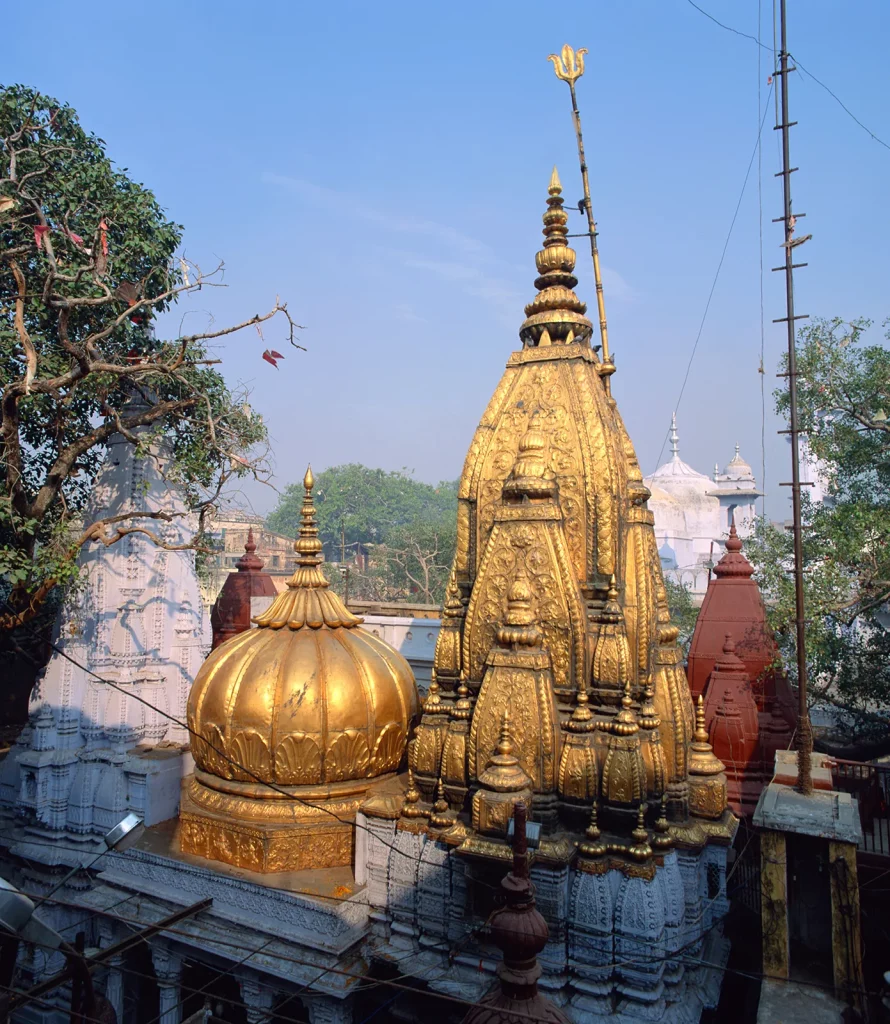
East of the Devi Jagdamba and Chitragupta temples is a terrace that is home to the Vishvanath Temple. There are two staircases that go up to it; two elephants guard the southern stairway, while two lions guard the northern one. Although the Vishvanath was likely built before the Kandariya, two of the original corner temples may still be found here. A stunning depiction of the three-headed Lord of Creation, Brahma, and his bride, Saraswati, may be found on the exterior wall of the passageway that surrounds the cells.
Recent Posts
| Temple Architecture and Different Styles | Learn South Indian Temples With Names |
| 16 Facts About Tirupati Balaji Temple | Dravidian Style Temple |
| 19 Facts About Kamakhya Temple | 15 Facts About Konark Sun Temple |
FAQs
Chausath Yogini Temple, situated near the town of Khajuraho, Madhya Pradesh, India, is a ruined Yogini temple. It is the oldest temple still standing in Khajuraho, having been built in the late 9th century.
Khajuraho’s temples are famous for the way sculpture and architecture blend together perfectly. Every surface is heavily engraved with both non-anthropomorphic and anthropomorphic motifs that represent worldly and holy subjects.
The Khajuraho Temples are full of romantic symbols. Sculptures depicting divine beauties with large breasts, languishing eyes, and broad hips are frequently found at the temples of Vishwanath and Kandariya Mahadeva.
This was all about the “Temples of Khajuraho”. For more such informative blogs, check out our UPSC Exams Section and Study Material Section, or you can learn more about us by visiting our Indian exams page.
 One app for all your study abroad needs
One app for all your study abroad needs














